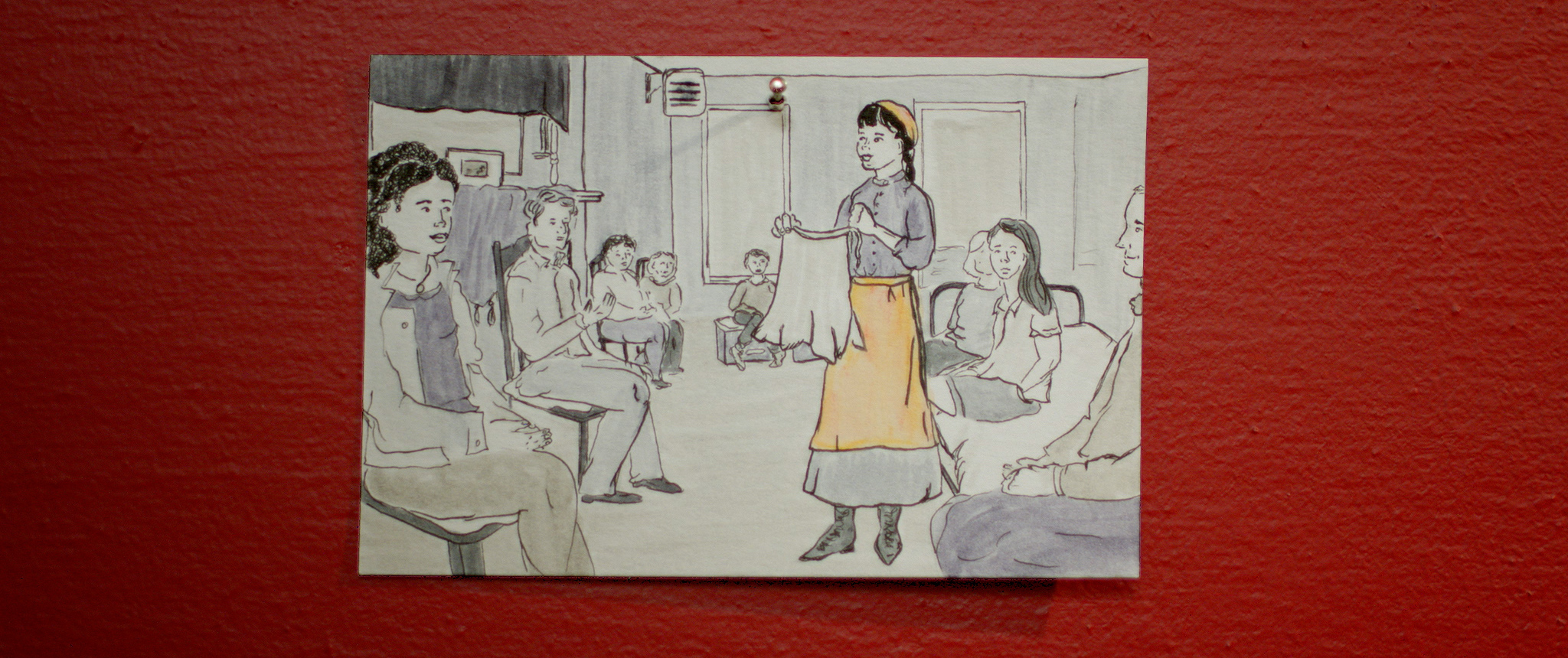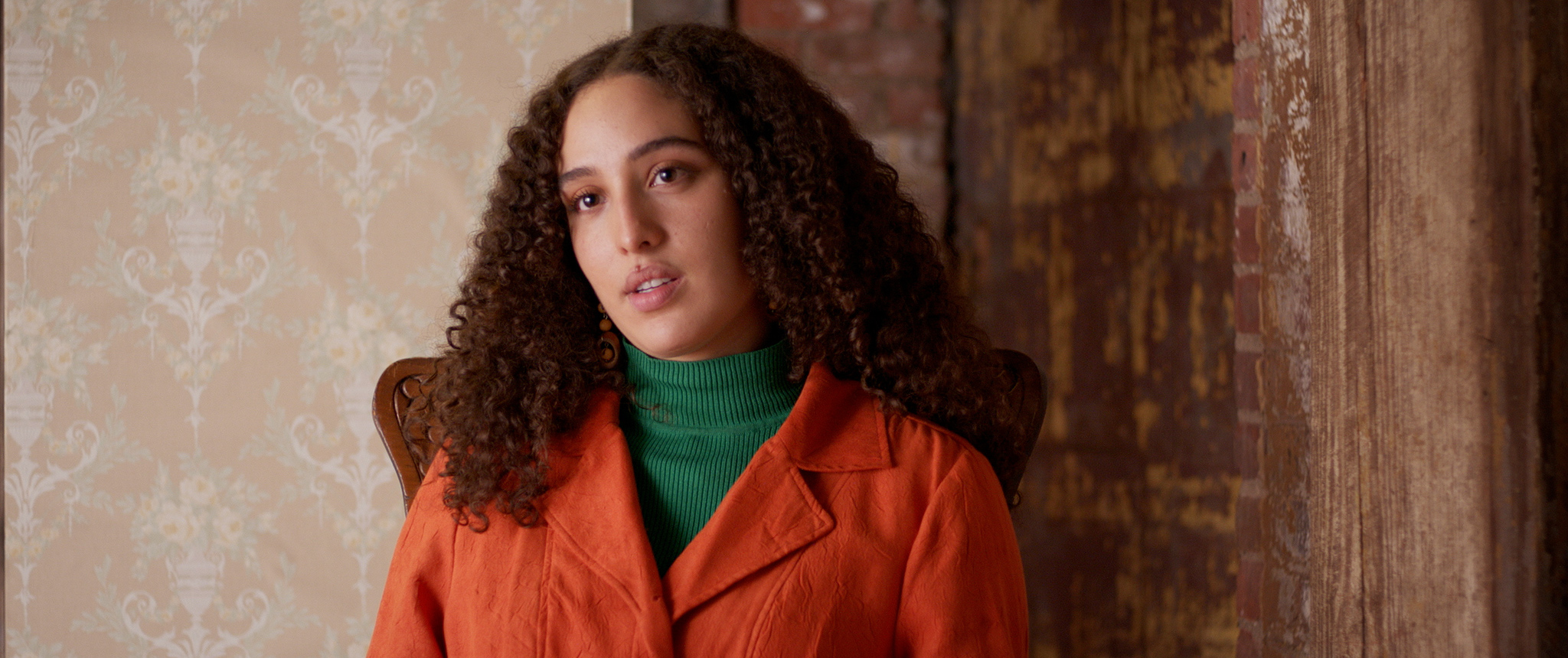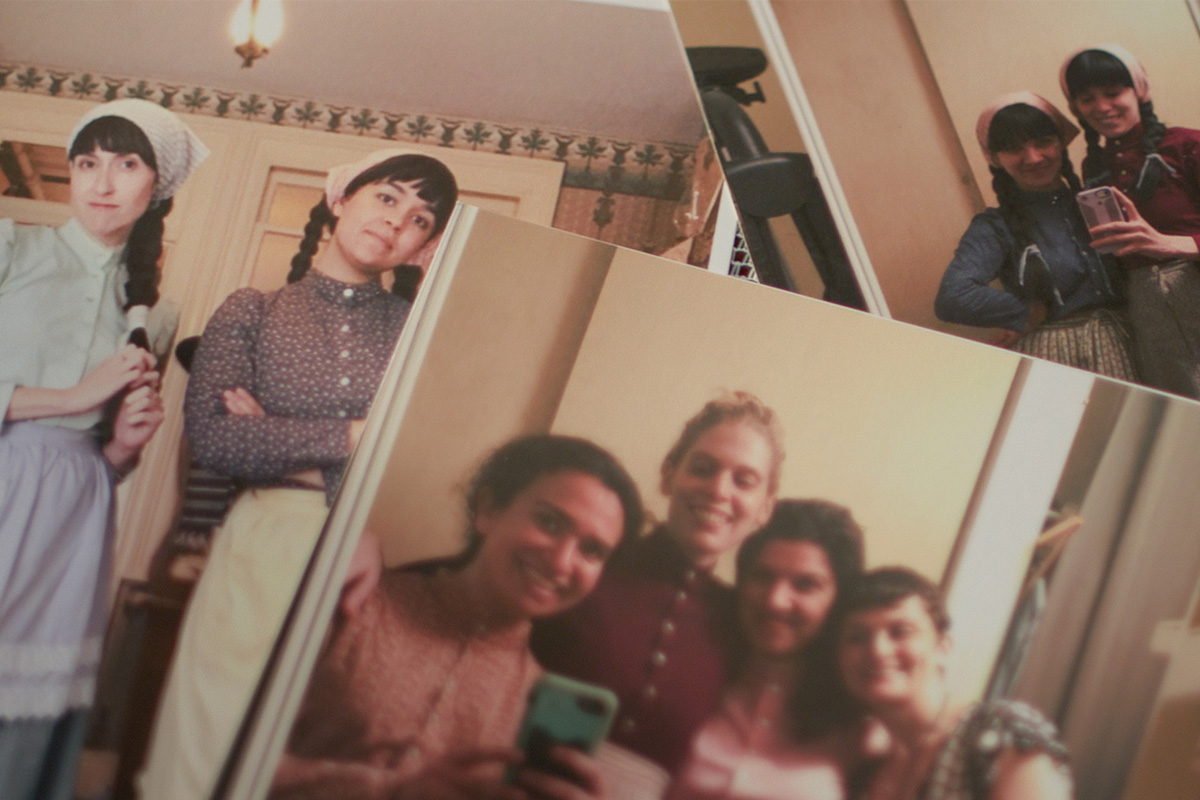In many ways, 20th-century Sephardic Jewish teenager Victoria Confino is still alive today. OK, not literally. But if you visit the house where she once lived, you can meet her.
Born in the early 1900s in Kastoria, Greece (which was part of the Ottoman Empire at the time), Victoria Confino was still a young girl when her family immigrated to the United States and settled in a tenement at 97 Orchard Street on the Lower East Side of Manhattan. She died around 1989.
If you’re currently wondering how one might go about encountering a 120-year-old Sephardic Jewish immigrant, don’t worry — there’s no seance required. Her story lives on through the Tenement Museum’s Meet Victoria program.
Visitors at the Tenement Museum sit down with a costumed performer portraying 14-year-old Victoria Confino in the year 1916. The adult performers, known at the museum as “the Victorias” or “the Vickies,” are part historian and part improviser, answering tour groups’ questions about her day-to-day life.
In 2020, at the start of the COVID-19 pandemic, the Tenement Museum furloughed all of its staff — including the Victorias — and temporarily closed operations. (They have since reopened and restaffed.) Eventually, the staff was laid off, leaving the Vickies bereft of both their jobs and their former connection to Victoria, to whom they had all grown attached..
For Jewish filmmaker Ethan Fuirst, the story of these performers was too compelling to not put them on screen. So he did.
The resulting short film, “The Victorias,” which was acquired by The New Yorker and debuts on its site today, features seven of the performers speaking about their experiences as Victoria Confino. The stories that Alexia Antoniou, Rachel Cockrill, Nicole Daniels, Jimmy Fay, Estefanía Giraldo, Rebeca Miller and Genevieve Simon share construct a portrait not of Victoria Confino herself, but rather of the people who give her life — workers who at once feel resentment towards the institution that didn’t appreciate them enough, gratitude for the community they’ve built together and a tender responsibility towards — and resonance with — their historical subject. In short, it’s a film that may bring you to tears in just 15 minutes.
Ethan spoke with Hey Alma about “The Victorias” and about who is the true steward of Victoria Confino’s story.
This interview has been lightly edited and condensed for clarity.
How did you first learn about Victoria? Or, in other words, when did you first meet Victoria?
This is not in the text of the film. It’s metatextual, I guess. I used to work at the Tenement Museum. I was a plainclothes educator, which is basically a tour guide. One of the programs required me to be like, “And behind this door we’re going to meet a performer playing a Sephardic immigrant in 1916.” And then I would bring the tour group in, and that was the Meet Victoria program.
I witnessed these people performing as Victoria by being in the room and watching them do it. I think if I explained [the program] to a stranger on the street, it would sound really hokey and bad, but it was actually impressive and moving. I witnessed grown adults cry in the room based on the Victoria performances. And so then the pandemic happened and we were all furloughed, and then laid off. I mourned the loss of a job that I thought was pretty cool, but also maybe not financially feasible — but the Vickies felt like they lost that, plus this connection to a person they had never met.
And what was your relationship to the Vickies? Were you friends? Co-workers?
I would consider them all friends. I had seen all seven of the performers outside of the context of work. But I think that made it difficult at points because they knew me as a friend and a co-worker and not as a filmmaker first. And then to be asked to change the dynamic of our relationship from coworkers kiki-ing in the break room to documentary filmmaker and documentary subject was a bigger jump than I thought it would be. It required me to earn their trust on a different level.
How was the filmmaking process?
We filmed it in February of 2021. We were all furloughed in March of 2020, and I was insistent that if we were to do this, we would have to do it before the one year mark of being furloughed, because I thought you’d lose a bit of the immediacy of their experiences once you passed one year. And then there was a spike in COVID. The difference between the agency they had around their own stories, and then the agency they had around their physical health and safety on set… that gets very bungled together in COVID.
We rented out a studio — and from a filmmaking perspective, a lot of people were like, “I don’t think you need to do that.” But I truly believe that part of the message of this film is taking work like this seriously, and taking performance and museum work and public-facing labor seriously. So one way to articulate that visually is to have them look good, with a good camera and a good studio with sets behind them that tell the viewer that their labor is serious labor, in the same way you would see a tech boss presented very slickly on camera as well.
One point of the documentary that I found so interesting was the connection between the early 20th century American immigrants who were exploited for their labor and the people who portray them who, though it’s not the same kind of exploitation, felt undervalued in the workplace.
I appreciate you saying that. When I was interviewing the Victorias, and when we were editing it, I tried to be like, “How close can we get to the one-to-one?” You have this Sephardic immigrant in 1916 being exploited and these workers in 2020 who are being undervalued by a nonprofit institution. And I was like, when you put them one-to-one, it really dilutes the actual challenges of Victoria Confino, or really diminishes them — but there are parallels that I appreciate you seeing because they still exist, especially with Victoria being a woman. I think this type of public-facing labor is seen as less important because it’s historically been associated with women’s work, which is undervalued. I think they’re all thematically connected through that.
Did you request a comment or an interview from the Tenement Museum? And do you know what their response has been to the film?
I wanted no museum involvement. As a filmmaker, I couldn’t because it’s about them. And I don’t know what their response has been. We were very deliberate about not showing images of the real Victoria Confino — I was insistent that this is not a film about Victoria. This is a film about the people who played her. And that applies to the museum as well; we weren’t going to use the museum’s content in the film. But I am curious if they’ve seen it.

Now that it’s on The New Yorker site it seems a bit impossible for the Museum not to engage with the film.
It’s a funny thing. Part of me getting to get the Vickies to agree to go on camera was me saying like “No one’s going see this film.” Before we filmed, we all agreed on a Zoom in February 2021, that it’s just going to go online, and my friends and family are gonna watch it. I’ve been very grateful for the of success we’ve had, but it’s definitely reached a wider audience than I think any of us expected. I wonder if it would have affected what they said on camera if we’d known it would end up on The New Yorker two years later.
Yeah, absolutely. I saw on the Tenement Museum website that they’re now doing virtual tours with Victoria Confino. Do you know if they’ve rehired any of the Vickies that they laid off?
The Tenement Museum offered a lot of us our jobs back and, speaking to my experience, I wrote an email saying I couldn’t afford to return at that rate. And they did offer a lot of the Vickies you see on screen their jobs back. Some took them up on that offer, and some of the Vickies are now back performing as Victoria, which I think doesn’t change the film. This film is still a snapshot in time of what seven people felt about an experience on the day they went in front of the camera. It’s not the definitive story of people who played Victoria Confino, and it’s not the definitive interpretation of the narrative of those seven subjects. But it is a snapshot into some of the feelings that were involved with that experience and some of the impacts it had on those people.
I know the film isn’t necessarily about Victoria, but do we know what happened to Victoria and her family after the 1910s?
I don’t remember all the details, but she moved uptown, to Harlem, where there was a Sephardic community. And then I want to say she moved to Queens or Brooklyn. And she died around 1989, before the program existed at the museum.
Her family gave the museum a lot of documents and photographs, and her daughter or granddaughter recorded versions of lullabies that Victoria would sing to them — like the Ladino song “Durme, Durme” which all the Vickies sing together at the end — so it’s all passed down from Victoria’s family. It’s so interesting to me that the narrative of Victoria Confino went from family to institution (the Tenement Museum) to workers within the institution. I am really interested in the question of who are the real stewards of this narrative? Is it the Tenement Museum institution, which has the Meet Victoria Confino program on their website? Or is it the people who are studying her life, who are interpreting it, who are performing the labor of bringing it to life, but don’t have a say in how the program is appreciated or prioritized by the institution that is formally in charge of the story?
That is really interesting. Do you feel like an honorary Victoria in telling this story?
Not at all. Because seeing how specific their experiences were made me appreciate [the program] more, but it also clarified how different my experience was as a normal educator. I think part of my job as a filmmaker is to respect their narrative as they’re telling it to me and understand that I’m a different side of it.
But that actually has become an interesting point because, as the filmmaker, I’m the face of this film. And I’m just a cis white boy who’s telling the story of all these performers who played a Sephardic girl in 1916. In the film, Jim talks about the complicated feelings of being a white person with blue eyes playing Victoria Confino. And I think I share some of those complicated feelings of being a cis white man telling the story of the people who played Victoria Confino. But it’s not like there were other documentarians flocking to the scene. Still, part of me understanding the story is knowing that it’s not mine, even if it is one that I helped interpret into this 15 minute film.
You are Jewish, but Ashkenazi, not Sephardic. Does that play into the feelings you just described?
My relationship with my Jewishness has changed over time. I spent my middle school years going to a lot of bar and bat mitzvahs, and I kind of thought I would grow out of it. But like all my Jewish peers, the second I left for college, I realized how important my Jewish identity was to me. I don’t attend shul, but I have found ways to keep it a part of my life.
So I find this an interesting question. I think of the seven performers, only one is Jewish. Most of the people on screen are not Jewish. And I think, yeah, the question of who can tell what stories and how certain identities can be interpreted through other identities, positively or negatively, is something that’s inherent in this film. Estefanía talked about being a Colombian-American and how much of her own story she saw in Victoria Confino — but she is not Jewish. And then you have Rachel, who is an Ashkenazi Jew, connecting to Victoria Confino through Judaism. But Rachel is not Sephardic. The film is about the power, but also perhaps the limitation, of performance. I think I fit into the limitation part of that.

Were there any other especially meaningful collaborations as you worked on the film?
As we got close to locking the film in the edit, we worked with an amazing Sephardic musician named Lily Henley.
Oh, Hey Alma profiled her! She’s amazing.
Yeah, Lily created the score for the film, which was incredible. After the film was finished, we had a screening in September, and then I sent it to a bunch of festivals. Initially we got a lot of rejections, but then we got into Aspen Shortsfest, which was in April. I always believed in the film, but we got a lot of great feedback. I think the biggest surprise was hearing people laugh at it in the theater. I always thought it was funny — I think those seven people are hilarious and their ability to incorporate humor as Victoria was so moving — and it was great to see the audience understand that and laugh with them. And then The New Yorker acquired it, so we’ve had to go quiet with the film. But it was just at the San Francisco Jewish Film Festival.
That’s great. Do you see this as an isolated project, or would you potentially do something longer form with the Vickies?
This is the end of the road, because I think part of understanding the story’s power is knowing when to cut to black and run the credits. There are so many ways to interpret the experience of the people who have played Victoria Confino, and this is the one I chose.



